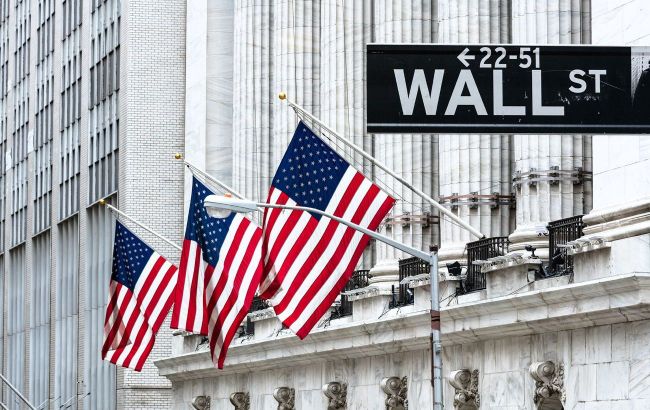Markets once again inspired by AI and hopeful for more accommodative central banks
 Business activity in the USA, the United Kingdom, and the Eurozone is slowing down more than expected (Photo: Getty Images)
Business activity in the USA, the United Kingdom, and the Eurozone is slowing down more than expected (Photo: Getty Images)
Weekly financial market overview from the Head of Corporate Research at ICU Group, Olexander Martynenko.
After nearly a month of turmoil due to the threat of higher long-term interest rates, last week the markets returned to their usual tracks of hope for a brighter future. It seems that the time has finally come when interest rates will start to decrease, investors pondered. And evidently, that time is approaching, as August surveys of purchasing managers, from which popular PMIs are compiled, showed that business activity in the United States, the United Kingdom, and the Eurozone is slowing more than expected.
For the markets, this negative news served as a valid reason to expect a more accommodating stance from central banks. Moreover, investors found nothing to fear in the speech by Jerome Powell, the Federal Reserve Chairman, at the Jackson Hole Economic Symposium last Friday. He did not deviate an inch from the line he has been following throughout this year: taming inflation is the priority, which may require new rate hikes, but the FRS will act very cautiously. This position may not be called soft, but the absence of stronger signals boosted the markets.
Here, another aspect of a brighter future reminded itself - the implementation of AI technologies. The phenomenon of the leading American chipmaker Nvidia continues on the markets, with its stocks soaring by more than 220% since the beginning of the year. Last week, the technology sector flagship reported on the second quarter, and market participants on social media were betting on how many times the company's CEO, Jensen Huang, would mention the phrase "artificial intelligence" or AI in the presentation.
However, the company once again surprised, surpassing analysts' forecasts for both the results of the last quarter and its own forecasts for the current quarter. As a result, Nvidia's shares added another 3.5% in a week. Interestingly, a significant portion of this growth occurred before the publication and also lifted many other tech sector stocks.
As a result, the main tech sector index, the Nasdaq Composite, jumped 2.3% in a week, with the S&P 500 following a bit slower, up 0.8%. European Stoxx 600 (+0.7%) and the global All-World FTSE (+0.5%) also edged up slightly, although Asian markets still fluctuated due to Chinese economic troubles. As always, the bond markets, which are more cautious than equity players, responded to the FRS Chairman's warnings and raised yields on two-year US Treasury bonds by 14 basis points to 5.07%, the highest level since July 2006.
For stock markets, last week was the first week of growth since the end of July, mainly due to the return to the "glass half full" perspective and expectations. This week, the markets are awaiting a serious test in the form of employment reports and the Consumer Price Index in the United States, as these data currently indicate that it's too early to talk about a sustained slowdown in inflation.
.png) Ukrainian Eurobonds continued to decline last week, in line with expectations of higher global bond market rates. Sovereigns fell by nearly 2% on average to 27-34 cents on the dollar. GDP warrants declined by 1% to 47 cents on the dollar of nominal value. At the same time, investment volumes in domestic government bonds (OVDP) decreased for all categories of investors.
Ukrainian Eurobonds continued to decline last week, in line with expectations of higher global bond market rates. Sovereigns fell by nearly 2% on average to 27-34 cents on the dollar. GDP warrants declined by 1% to 47 cents on the dollar of nominal value. At the same time, investment volumes in domestic government bonds (OVDP) decreased for all categories of investors.
The population increased its purchase of foreign currency, which continued to weigh on the hryvnia: over the past week, the cash exchange rate of the hryvnia in systemically important banks weakened by another 1% to 37.7-38.7 UAH/USD. In the interbank market, demand for hard currency increased compared to supply, leading to increased interventions by the National Bank. Signs are more likely pointing to expectations of future liberalization of the foreign exchange market by the National Bank, as well as traditional seasonal expectations of a weaker hryvnia.

